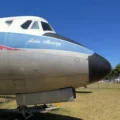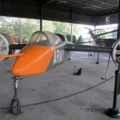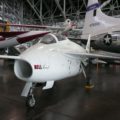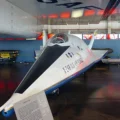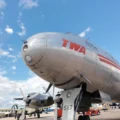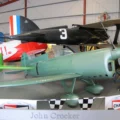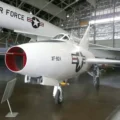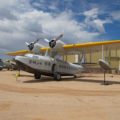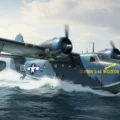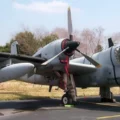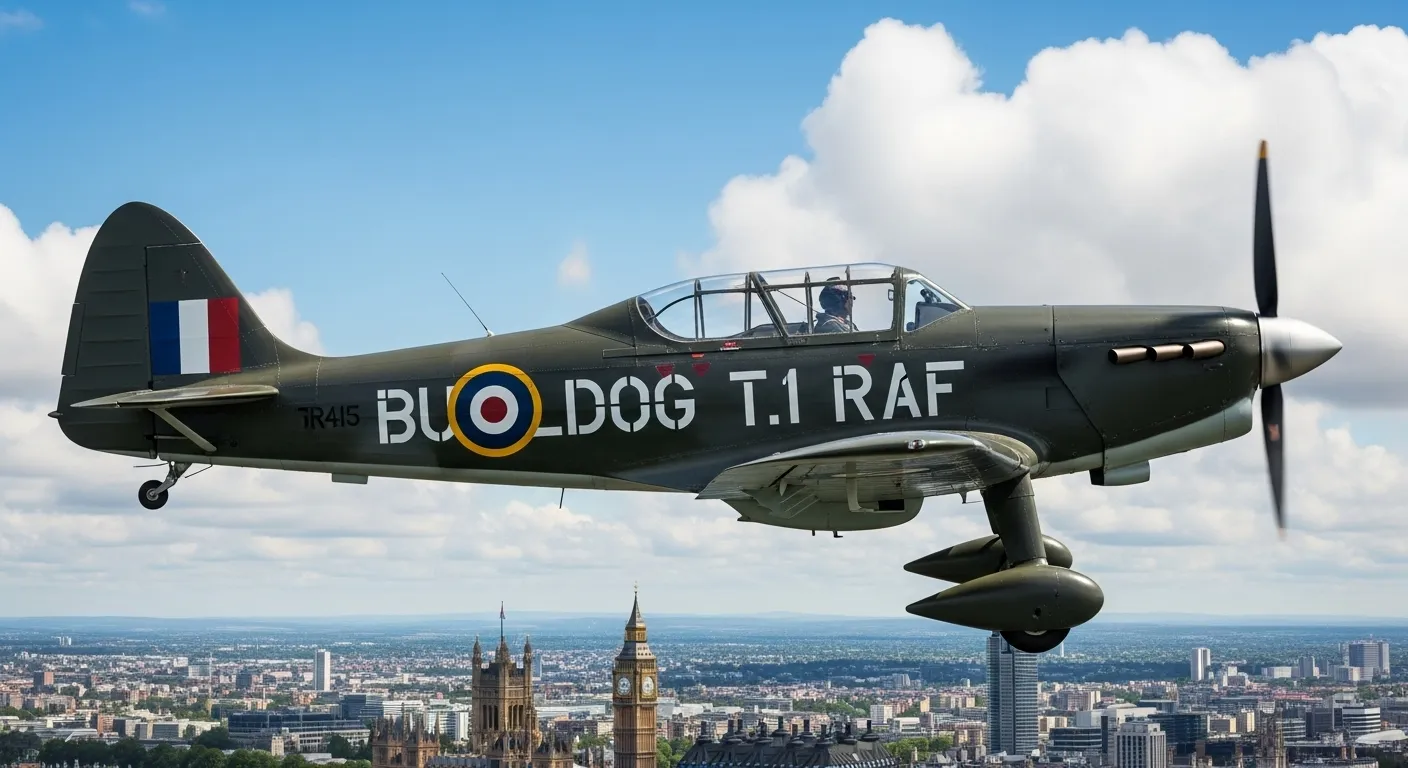
Bulldog T.1 RAF |
|
|---|---|
| Maa | Iso |
| Rooli | Basic trainer with aerobatic capability |
| Ensimmäinen lento | 19 May 1969 |
| Luotu numero | 328 |
Nniiden Scottish Aviation Bulldog is a British two-seat side-by-side (with optional third seat) training aircraft designed by Beagle Aircraft as the B.125 Bulldog.
Lähde: Bulldog T.1 RAF on Wiki
| Bulldog T.1 RAF Walk Around | |
|---|---|
| Valokuvaaja | Meindert de Vreeze |
| Lokalisointi | Ei tietää |
| Valokuvat | 17 |
Wait, Searching Bulldog T.1 RAF for you…

Katso myös:
Lisätietoja:
The Scottish Aviation Bulldog T.1: A Definitive Account of its Design, Service, and Enduring Legacy
1. Introduction: The Enduring Legacy of the Scottish Aviation Bulldog T.1
The Scottish Aviation Bulldog T.1 stands as a pivotal two-seat, piston-engined primary trainer aircraft that served the Royal Air Force (RAF) with distinction for nearly three decades.1 Its robust design and excellent handling characteristics made it an ideal platform for basic flight instruction and aerobatic training, playing a crucial role in shaping a generation of RAF pilots by providing foundational flying skills and initial exposure to military aviation.1 Originally conceived by Beagle Aircraft as the B.125 Bulldog, its development and subsequent manufacturing were undertaken by Scottish Aviation.1 The aircraft officially entered RAF service in April 1973, primarily succeeding the de Havilland Chipmunk T.10 in its vital training role.1 This transition from the Chipmunk, largely a taildragger, to the Bulldog with its fixed tricycle landing gear 1, marked a deliberate strategic shift in RAF elementary flight training. This move aimed to align initial pilot instruction more closely with the configurations of modern jet and multi-engine aircraft, thereby facilitating a smoother transition for student pilots and potentially reducing the overall complexity or duration of later training phases. The inclusion of a steerable nosewheel on the Bulldog notably eased the training burden for students when compared with the challenges presented by the taildragger predecessors.4 This forward-thinking approach by the RAF underscored a commitment to streamlining pilot training for the future, acknowledging the evolving landscape of military aviation and focusing on efficiency in preparing pilots for the advanced aircraft they would eventually command.2. Development and Design Evolution
The genesis of the Bulldog dates back to the late 1960s, when Beagle Aircraft embarked on a project to develop a suitable replacement for the RAF’s aging de Havilland Chipmunk trainers.5 Their design, designated the B.125 Bulldog, incorporated several key enhancements, including a more powerful 200 hp engine, a constant-speed propeller, and a strengthened wing and fuselage structure.5 However, Beagle’s financial difficulties ultimately led to the company’s liquidation in February 1970, before the prototype could be delivered.5 Following Beagle’s demise, the rights to the aircraft design were successfully acquired by Scottish Aviation (Bulldog) Limited, which then assumed responsibility for its continued production.1 The majority of the 328 units produced were manufactured at Prestwick Airport.2 The Bulldog T.1’s design philosophy centered on practicality and effectiveness in a training environment. It adopted a conventional low-wing monoplane configuration, featuring a fixed tricycle landing gear that contributed significantly to its reputation for robustness and ease of maintenance.1 Its primary construction utilized riveted aluminum sheet, complemented by plastic components for fairings and wingtips.4 The cockpit layout was a defining feature, designed with a side-by-side arrangement that deliberately facilitated direct interaction between the instructor and student, a critically valuable asset in fundamental flight training.1 The cabin was generously proportioned, featuring a sliding canopy that provided ample space, even for RAF personnel wearing bulky bone domes and parachutes common in the 1970s.4 This design also afforded excellent all-round visibility, which was particularly beneficial for circuit flying and formation work.4 Aerodynamically, the outer portion of the wing incorporated a drooped leading edge, creating an under-camber that was likely introduced after initial flight testing to ensure a more forgiving stall characteristic.4 Slotted flaps were positioned along the inner two-thirds of the wing’s trailing edge, while Frise ailerons on the outer third provided a commendable roll rate.4 The aircraft’s large fin and rudder, along with a significant fin strake under the rear fuselage and additional strakes ahead of the tailplane, suggested a design that carefully addressed concerns regarding spin recovery, a crucial aspect for a trainer aircraft.4 The control systems were designed for intuitive and robust operation. Unlike some aircraft that use push controls or fiddly verniers, the Bulldog featured solid, color-coded, and aligned levers for engine and propeller control, resembling those found in larger airliners or bombers.4 Instead of yokes, it was equipped with control sticks that were ergonomically designed with a no-nonsense grip, preventing hand slippage during demanding maneuvers.4 Cockpit-operated trim tabs were fitted to the fin and elevator, and the presence of a steerable nosewheel significantly simplified ground handling compared to its taildragger predecessors.4 The emphasis on a side-by-side cockpit for direct instructor-student interaction 1 and the large canopy providing excellent external visibility 8 underscored a profound understanding of the pedagogical requirements in flight training. This design choice prioritized immediate feedback, effective non-verbal communication, and shared situational awareness, all of which are paramount for effective initial instruction. The intuitive, solid control levers and sticks further supported practical, hands-on operation, mirroring controls in more advanced military aircraft and thus aiding the student’s progression. This human-factors-centric design significantly contributed to the Bulldog’s effectiveness as a trainer, likely leading to higher student success rates and more efficient learning, solidifying its reputation as an ideal platform.1 This highlights a design philosophy where the utility for training was paramount, extending beyond mere performance metrics. Furthermore, the consistent descriptions of the Bulldog as “robust and reliable” 1, “rugged” 1, “ease of maintenance” 1, and “cost-effective” 1, coupled with its fixed tricycle landing gear 1 and riveted aluminum sheet construction 4, point to an engineering philosophy that prioritized durability and low operational costs within a demanding, high-utilization training environment. Observations of the aircraft’s “immaculate” internal condition, even after years of service 4, further substantiate its build quality. This focus on durability and maintainability directly translated into high availability rates for training sorties, minimizing downtime and maximizing the return on investment for the RAF. This approach underscores the practical realities of military training aircraft procurement, where operational readiness is as critical as flying characteristics.3. Technical Specifications and Performance
The Scottish Aviation Bulldog T.1 is powered by a single Lycoming IO-360-A1B6 four-cylinder, air-cooled horizontally opposed piston engine, which generates 200 hp (149 kW).1 This engine is coupled with a two-bladed constant-speed propeller, specifically a 6ft 2in diameter Hartzell HC-C2YK-4F/FC7666A-2.1 The aircraft’s dimensions are as follows:- Wingspan: 33 ft 2 in (10.11 m) 5
- Length overall: 23 ft 3 in (7.08 m / 7.1 m) 5
- Height overall: 8 ft 11.5 in (2.73 m) 5
- Wheel track: 6 ft 8 in (2.03 m) 9
- Wheelbase: 4 ft 7 in (1.40 m) 9
- Maximum Speed: 150 mph (130 kts / 240 km/h) 5
- Cruise Speed: Typically between 120-140 mph (125 kts at 75% power, 118 kts at 60% power) 9
- Stalling Speed: 53 kts with flaps up, and 50 kts with flaps down 9
- Never Exceed Speed: 185 kts 9
- Service Ceiling: 16,000 ft (4,900 m) 5
- Range: 620 miles (540 nmi / 1,000 km) 5
- Rate of Climb: Varies slightly across sources, with figures of 1,034 ft/min (5.25 m/s) 7 and an initial climb to 5,000 ft at 1,000 ft/min.10
- G-limits: Capable of withstanding forces up to +6g and down to -3g.1
| Category | Parametri | Arvo | Supporting Snippet ID(s) |
| Moottori | Tyyppi | Lycoming IO-360-A1B6 | 1 |
| Output | 200 hp (149 kW) | 1 | |
| Propeller | Tyyppi | Two-bladed constant-speed | 1 |
| Diameter | 6 ft 2 in (1.88m) Hartzell HC-C2YK-4F/FC7666A-2 | 9 | |
| Dimensions | Siipiväli | 33 ft 2 in (10.11 m) | 5 |
| Length overall | 23 ft 3 in (7.08 m / 7.1 m) | 5 | |
| Height overall | 8 ft 11.5 in (2.73 m) | 5 | |
| Wheel track | 6 ft 8 in (2.03 m) | 9 | |
| Wheelbase | 4 ft 7 in (1.40 m) | 9 | |
| Weights | Tyhjä paino | 1,428 lbs (649 kg) | 5 |
| Max Take-Off weight | 2,345 lbs (1,066 kg) | 5 | |
| Suorituskyky | Enimmäisnopeus | 150 mph (130 kts / 240 km/h) | 5 |
| Cruise Speed | 120-140 mph (125 kts at 75% power, 118 kts at 60% power) | 9 | |
| Stalling Speed | 53 kts (flaps up) / 50 kts (flaps down) | 9 | |
| Never Exceed Speed | 185 kts | 9 | |
| Service Ceiling | 16,000 ft (4,900 m) | 5 | |
| Etäisyys | 620 miles (540 nmi / 1,000 km) | 5 | |
| Rate of Climb (ROC) | 1,034 ft/min (5.25 m/s) / Initial climb to 5000ft: 1000 ft/min | 7 | |
| G-Limits | +6g and -3g | 1 | |
| Fuel Capacity | Imperial Gallons | 32 imperial gallons | 9 |
| Armament (Optional) | Machine Guns | Four underwing 7.62 machine-gun pods | 5 |
| Raketteja | Fourteen 75mm rockets / 68mm SNEB Rocket Pods / 80mm SURA Rockets | 5 | |
| Missiles | Eight Bofors wire-guided missiles / Bantam ATGMs | 5 | |
| Bombs | Up to 640 lbs (approx. 290 kg) | 5 |
4. Operational Service with the Royal Air Force
The Bulldog T.1 was officially purchased by the RAF in 1972 and entered service in April 1973.2 It was introduced primarily to replace the aging de Havilland Chipmunk T.10.1 The RAF ultimately received between 130 and 132 Bulldogs, which were distributed among various units.3 The Bulldog T.1 was fundamental to the training pipeline of aspiring RAF pilots.1 Its primary users were the University Air Squadrons (UAS) and the Air Experience Flights (AEF).1 The UASs utilized the Bulldog as their standard aircraft across the country, providing potential recruits with their initial exposure to military flying and developing their foundational piloting skills.1 Concurrently, the AEFs employed the aircraft to offer valuable flying experience to air cadets.1 The aircraft’s training capabilities were extensive. Its full aerobatic capability, allowing maneuvers up to +6g and down to -3g, enabled students to practice loops, rolls, and spins. These exercises were crucial for cultivating aircraft control and spatial awareness, skills vital for any military pilot.1 Beyond aerobatics, the Bulldog was also effectively used for basic instrument flying training and navigation exercises, providing a comprehensive initial flight education.1 The side-by-side cockpit design further enhanced the learning environment by facilitating direct interaction between the instructor and student, a valuable asset in basic flight training.1 Throughout its service life, the Bulldog T.1 earned a distinguished reputation for exceptional reliability, ease of operation, and ruggedness.1 These attributes made it a cost-effective and dependable trainer, solidifying its status as a workhorse in initial flight training for a generation of RAF pilots.1 The repeated emphasis on the Bulldog’s deployment by University Air Squadrons (UAS) and Air Experience Flights (AEF) underscores its critical role as the initial filter and foundational training platform for aspiring RAF pilots.1 It served as the first hands-on experience for many, proving crucial for “giving potential recruits their first taste of military flying and to develop their foundational piloting skills”.1 This pre-selection and early skill development phase is vital for the overall efficiency of the military flying training system. The Bulldog’s success in this role meant that pilots entering more advanced stages of training already possessed a solid grasp of fundamental flying, aerobatics, and instrument skills, thereby reducing the burden on subsequent, more expensive training platforms. Its longevity in this role, spanning over three decades 1, speaks volumes about its effectiveness and the RAF’s sustained confidence in its capabilities as a primary screening and training tool. The descriptions of the Bulldog as “robust and reliable” 1, “rugged” 1, and capable of handling aerobatics despite being categorized as a “basic trainer” 2 highlight a key operational requirement for military training aircraft. These aircraft undergo intensive use, often by inexperienced pilots, and must be designed to withstand significant stress. The documented history of individual aircraft, such as XX637, which was “overstressed the airframe and roaded to RAF Shawbury for repairs” 12 yet continued its service, further illustrates the Bulldog’s inherent durability and reparability. This inherent robustness minimized maintenance downtime and associated costs, ensuring a high availability rate for training sorties. This capability allowed the RAF to maintain a consistent flow of pilots through the initial training pipeline, which is critical for national defense readiness. The design choices prioritizing robustness directly supported the high-tempo demands of military flight training.5. Global Reach and Export Success
While the T.1 variant was specifically tailored for the RAF, the Bulldog achieved considerable global reach and export success. Over 320 units were built and sold to numerous air forces and civilian operators worldwide.1 This widespread adoption beyond its primary RAF role serves as a powerful validation of the Bulldog’s fundamental design and utility. It demonstrates that the aircraft’s core attributes—robustness, aerobatic capability, and suitability for basic training—were globally recognized and desired. Among its notable international customers, the Swedish Air Force and Army were the first, ordering a combined fleet of 78 Bulldogs, designated SK61, between 1971 and 1972.2 These aircraft remained in Swedish service until their retirement in 2001.6 In addition to Sweden and the UK, the Bulldog was acquired by nine other nations, and it is believed to still be in active service with the air forces of Lebanon and Kenya.6 Overall production of the Bulldog ran from 1969 to 1982, with approximately 328 units manufactured.1 The Swedish Air Force being the “first customers” even before the RAF’s full adoption further underscores the aircraft’s early international appeal. This widespread adoption beyond its primary RAF role signifies the Bulldog’s success as a commercially viable product in the competitive global military trainer market. It highlights Scottish Aviation’s capability to produce an aircraft that met diverse international requirements, contributing significantly to the UK’s aerospace export industry.6. Retirement and Successor Aircraft
The RAF Bulldogs were progressively retired from service beginning in the late 1990s, with the final aircraft leaving active duty in 2001.1 Concurrently, the Swedish Air Force also retired its fleet of Bulldogs in 2001.6 The primary successor to the Bulldog T.1 for University Air Squadron (UAS) and Air Experience Flight (AEF) service was the Grob Tutor T.Mk 1 (Grob G 115E).3 The Grob Tutor was selected in June 1998, with the first deliveries to UASs commencing in September 1999.8 The introduction of the Grob Tutor also signaled a significant shift in the operational model for RAF elementary flying training. Unlike the Bulldog, which was directly owned and maintained by the RAF, the Tutor aircraft were purchased and operated by private industry, initially VT Aerospace and subsequently Ascent Flight Training, under a contract with the Ministry of Defence (MoD) as part of the UK Military Flying Training System.8 Under this arrangement, military personnel continue to provide flying instruction, while civilian contractors are responsible for aircraft maintenance.8 This transition from the Bulldog, which operated under a traditional RAF ownership and maintenance model, to the Grob Tutor, which is privately owned and operated under a Private Finance Initiative (PFI) contract, represents a fundamental change in the RAF’s approach to military flying training procurement.8 This move towards outsourcing maintenance and potentially aircraft ownership aims to leverage private sector efficiencies and achieve cost savings. The explicit mention that “Putting flying training under a contract with a service provider was discussed in 2000. Bombardier Aerospace (Bombardier) had been given a PFI contract in July 1998 to replace Bulldog aircraft with the Grob ‘Tutor’ and also maintain them at the University Air Squadrons” 14 confirms this strategic shift. This trend reflects a broader governmental strategy in the UK and other nations to privatize non-core military functions to achieve greater cost-effectiveness and flexibility. While the Bulldog served faithfully under the traditional model, its retirement coincided with a significant re-evaluation of how military training assets could be managed, with long-term implications for the structure and economics of RAF flight training. Despite their military retirement, many ex-RAF Bulldogs found new lives in civilian hands, continuing to be flown by private owners and flying clubs.1 Many of these aircraft still fly in their original RAF colors 3, a testament to their enduring appeal and capabilities.1 The fact that these aircraft were readily adopted by the civilian sector after their military service highlights their inherent design quality, low operating costs, and strong performance characteristics. This civilian adoption extends the legacy of the Bulldog beyond its military service, demonstrating its versatility and economic viability in a different operational context. It also ensures that the public can continue to experience and appreciate these historic aircraft, maintaining a tangible link to RAF heritage.7. Preserved Examples and Historical Significance
Several Scottish Aviation Bulldog T.1 aircraft are preserved in museums across the UK, allowing the public to appreciate their historical significance and the vital role they played in British aviation history. Notable preserved examples include:- RAF Museum Midlands (Hangar 1, Serial No: XX654): This aircraft was ordered as the standard primary trainer to supersede the De Havilland Chipmunk and entered service in April 1973.3 (Note: Royal Air Force Museum Cosford, Shropshire, also lists Bulldog T.1 XX654 17, which is part of the RAF Museum Midlands collection.)
- National Museum of Flight at East Fortune, East Lothian: This museum houses the prototype Bulldog G-AXEH, as well as a Scottish Aviation-built Series 1 prototype.17
- National Museum of Scotland, Edinburgh, Scotland: Displays Bulldog 104 G-AXIG.17
- Newark Air Museum, Nottinghamshire: Home to Bulldog T.1 XX634.17
- South Yorkshire Aircraft Museum, Doncaster, England: Features Bulldog 125 G-BDIN and Bulldog T.1 XX669.17
- Ulster Aviation Society, Maze Long Kesh, Lisburn, Northern Ireland: Preserves Bulldog T.1 XX637, which is currently marked as a tribute to XX530.12 This particular aircraft has a rich service history with various University Air Squadron units and was utilized as a traveling exhibit.12
- 172 (Haywards Heath) Squadron Air Training Corps, Sussex: Has Bulldog T.1 XX520 on display.17
| Serial Number | Location/Museum | Notes | Supporting Snippet ID(s) |
| G-AXEH | National Museum of Flight, East Fortune, East Lothian | Prototype Bulldog | 17 |
| G-AXIG | National Museum of Scotland, Edinburgh, Scotland | Bulldog 104 | 17 |
| G-BDIN | South Yorkshire Aircraft Museum, Doncaster, England | Bulldog 125 | 17 |
| XX520 | 172 (Haywards Heath) Squadron Air Training Corps, Sussex | 17 | |
| XX634 | Newark Air Museum, Nottinghamshire | 17 | |
| XX637 | Ulster Aviation Society, Maze Long Kesh, Lisburn, Northern Ireland | Current markings as XX530 tribute; rich service history with UAS units, used as travelling exhibit | 12 |
| XX654 | RAF Museum Midlands (Hangar 1) / Royal Air Force Museum Cosford, Shropshire | Ordered as standard primary trainer, entered service April 1973 | 3 |
| XX669 | South Yorkshire Aircraft Museum, Doncaster, England | 17 |
8. Conclusion
The Scottish Aviation Bulldog T.1 carved out an indelible place in the history of military aviation, particularly within the Royal Air Force. From its origins with Beagle Aircraft to its extensive production under Scottish Aviation, the Bulldog T.1 proved to be far more than a mere basic trainer. Its thoughtful design, characterized by a robust airframe, fixed tricycle landing gear, and a side-by-side cockpit, was meticulously crafted to optimize the learning environment for aspiring pilots. The aircraft’s impressive aerobatic capabilities and reliable performance allowed for comprehensive initial flight training, including complex maneuvers crucial for developing fundamental aircraft control and spatial awareness. This capability meant that the RAF could impart critical skills to its recruits early in their careers, streamlining the overall pilot pipeline and preparing them effectively for more advanced aircraft. The Bulldog’s reputation for exceptional reliability, ease of maintenance, and cost-effectiveness ensured its longevity and high operational availability throughout its nearly three-decade service with the RAF. It served as the foundational platform for University Air Squadrons and Air Experience Flights, acting as the crucial first touchpoint for a generation of future military aviators. Its inherent versatility, evidenced by optional armament configurations and widespread export success to numerous air forces globally, further underscored the strength and adaptability of its core design. Although the Bulldog T.1 was eventually succeeded by the Grob Tutor, marking a significant shift in military training procurement towards private sector contracts, its legacy endures. Many ex-RAF Bulldogs continue to fly in civilian hands, a testament to their enduring appeal and robust construction. The numerous examples preserved in museums across the UK ensure that the Bulldog T.1’s pivotal role in shaping RAF pilots and its broader contribution to aviation history will continue to be recognized and celebrated for generations to come. The Scottish Aviation Bulldog T.1 remains a symbol of effective, durable, and foundational military flight training.Views : 80


